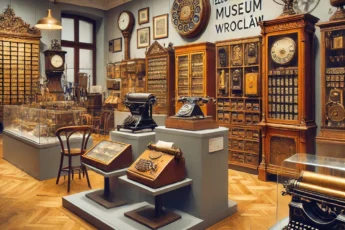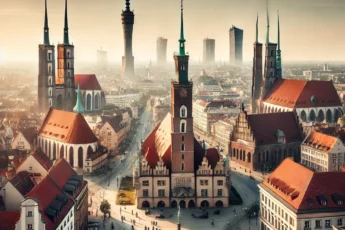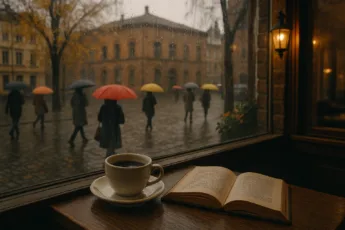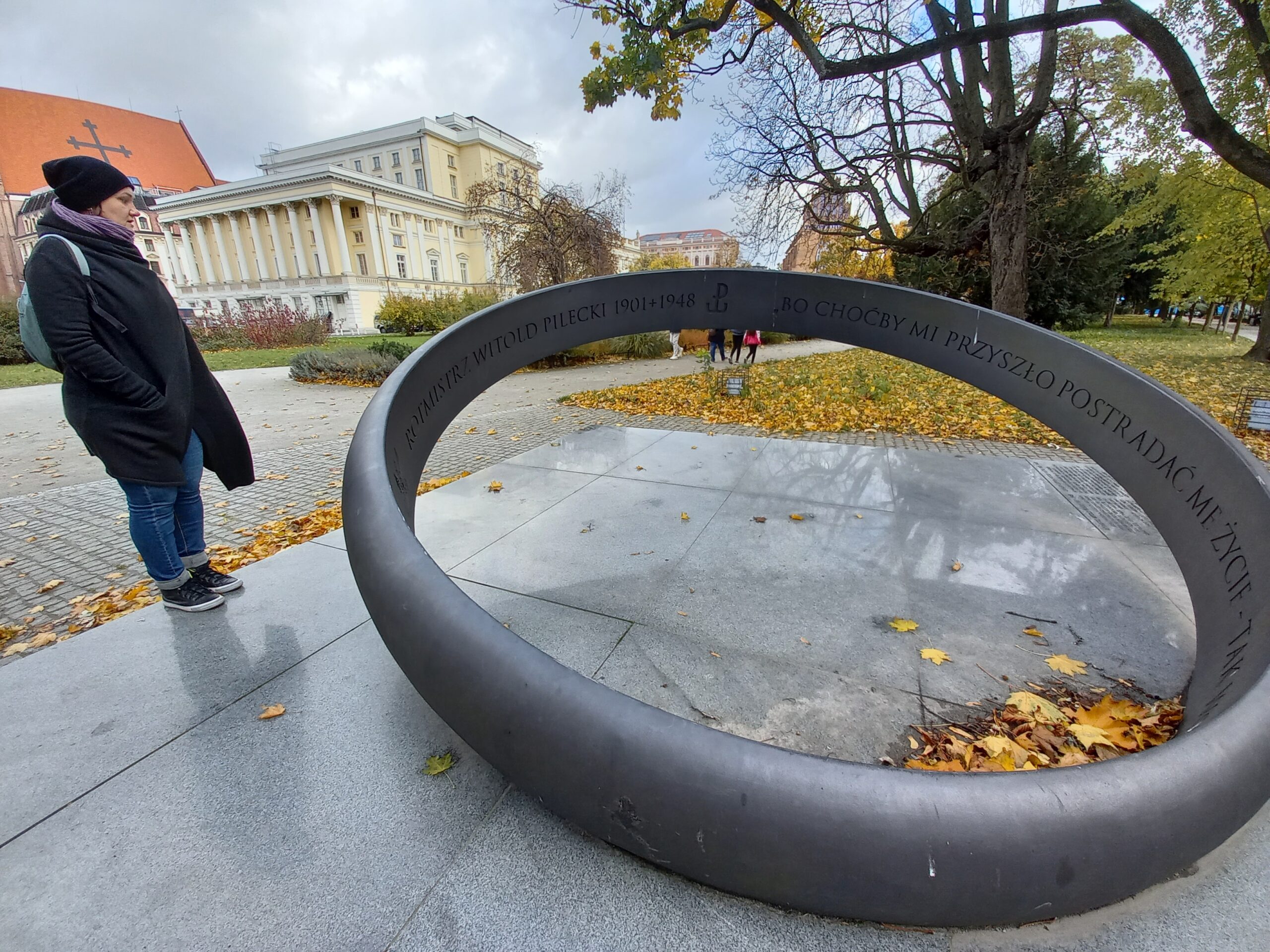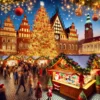A panic bastion in Wrocław - a place where history meets the everyday life of residents and tourists. Located in the heart of the city, on the partisan hill, it is not only a picturesque walking point, but also a testimony of the turbulent history of Wrocław.
The bastion created in the 16th century was part of the city fortifications that were to protect the city from invaders. Currently, despite numerous changes and damage, it impresses with its architecture and atmosphere. You can see an elegant colonnade, relics of the former fountain and a characteristic pavilion.
If you think: "Is this a place on a selfie?", The answer is: definitely yes! But bastion is more than nice photos. It is a space with a rich history, a place of cultural events, as well as an ideal viewpoint on the pulsating life of the center of Wrocław.
Read also: Monument to Steadfast Soldiers - location and symbolism
History of a pannier bastion
Beginnings and construction
In 1571, a bastion was erected according to the design of Hans Schneider von Lindau at the place of the medieval pannier gate. It was an element of the new -haired defense system, equipped with casemates and artillery positions, which was to protect Wrocław from contemporary threats.
Changes in the 19th century
After the capture of Wrocław by Napoleonic army in 1807, the demolition of city fortifications began. In 1867, the area of the former bastion was transformed into a recreational place. A colonnade and a perist pavilion were created at the design of Carl Schmidt, creating a popular meeting place for residents.
Post -war period
During World War II, the panic bastion was significantly damaged; In 1945, the tower at the top was blown up by German army.
After the war, the building was renovated and functioned as partisans, becoming a place of cultural events. Unfortunately, in 1967 there was a construction disaster, and in the following decades the building fell into ruin.
It wasn't until 2022 that thorough revitalization began, restoring its former splendor to the bastion.
The panic bastion has undergone a fascinating metamorphosis - from a key defense element, through an elegant meeting place to a neglected relic of the past. Today, after numerous adventures, again pleases the eyes of residents and tourists, being a testimony to the rich history of Wrocław.
Read also: Wroclaw market - a heart of a city full of history and life
Architecture and spatial system
The pannichial bastion is not only a historic monument, but also a pearl of architecture, which impresses even contemporary connoisseurs of beauty.

Colonnade - a business card of elegance
colonnade in the bastion , which attracts attention with its symmetry and proportions. Built in 1867 according to Carl Schmidt's design, it became a characteristic element of the landscape. The arches of the columns form an open space, which at the same time provides shade and adds a majestic character. Walking along the colonnade, you can feel the atmosphere of nineteenth-century Wrocław.
Perystyl pavilion - harmony and functionality
The focal point of the bastion is the peristyle pavilion , which once served as a meeting place and social events. Surrounded by neoclassical loudspeakers, it combines the simplicity of form with the elegance of details. During its glory, it was a viewpoint from which you could admire the panorama of the city.
Fountain and surroundings
a fountain in the bastion , symbolizing life and harmony. Although it is currently largely damaged, it is an important element of the historical spatial system. The surrounding area is green, which perfectly contrasts with monumental architectural forms. New plantings add freshness and encourage you to rest.
Architectural style - neoclassicism in all its glory
The architecture of the saddlebick bastion is an expression of the spirit of neoclassicism, which was dominated by the nineteenth-century Wrocław. Symmetry, the simplicity of forms and references to ancient Greece and Rome make the object emanate timeless elegance. Colonnades and pavilion are proof that neoclassicalism was able to combine aesthetics with functionality.
Interesting fact: during its splendor, the Bastion was a meeting place for the city's elite. Today, despite the passage of time, it still arouses admiration and becomes an inspiration for modern designers.
If you are interested in architecture and want to see how classic forms have survived the test of time, the pannichic bastion is a place that is worth visiting. You can not only admire his details, but also feel the spirit of the era!
Read also: Ostrów Tumski in Wrocław - history, monuments and attractions
Revitalization and contemporary importance of a pancake bastion
The saddlebag, once a pearl of Wrocław architecture, for decades more resembled a forgotten relic than the pride of the city. However, in 2022 a decision was made to restore his olden years. Interestingly, this process turned out to be not only a necessity, but also an archaeological journey in time.
The work began with the renewal of the colonnade and the peristyl pavilion. The Castellum company, responsible for the project, discovered historical details under layers of debris and plaster that allowed the reconstruction of the original appearance of the object. It was more than a renovation - it was a reconstruction of the spirit of the 19th century. The renovation of the first stage ended in June 2024, but in October further actions started, including, among others, the modernization of the building of the former toilet from 1897. Project budget? Almost PLN 27 million - but can you look at history through the prism of numbers?
Today, a pannier bastion is not only a place for fast coffee under an elegant colonnade, but also a space full of life. Concerts, exhibitions and outdoor events take place here, which attract both residents and tourists. The facility has gained a new function - it is a viewpoint with a panorama of Wrocław, which impresses at any time of the day.
Let's add carefully designed green and modern infrastructure and we have space that combines history with urban everyday life. Soon the restaurant is planned, which will additionally enter the bastion on the "Must-Visit" list in Wrocław.
Read also: Wrocław Zoo - attractions, information and practical advice
Cultural and social significance of pancake bastion
Pancake bastion - formerly an element of fortifications, today a space that is a reflection of the changing times and needs of residents. It used to function as part of the city's defensive walls, and sometimes he gained a more romantic face as a hill of love . Then the young couples walked along his paths, and the green hill became a scenery for the first kisses and wedding photographs.

In turn, in the post -war period, already under the name of the partisan hill , this place became a new, patriotic character. The name was to commemorate the heroes, and the symbolic burden of history accompanied residents in everyday life. This hill went a long way to become a space in the 21st century, where history intertwines with culture.
Contemporary saddlebag is a lively center of events. Outdoor concerts are organized here, which attract crowds of listeners from all over the city on summer evenings. There are also film shows under the open sky, thematic fairs and art workshops. This is a place where everyone will find something for themselves - from families with children to art lovers.
An example of an unusual initiative was the opening of the bastion after revitalization in 2024. The program included Beating commemorative coins and historical reconstructions in nineteenth-century costumes. Wroclaw enthusiastically accepted this return to the past in a modern edition.
Read also: Hall of Stulecia in Wrocław - history, architecture and practical tips
Practical information for visiting pancake bastion
| Category | Details |
|---|---|
| Address | ul. Father Piotr Skargi 18a, 50-082 Wrocław |
| Access | The panic bastion is located in the center of Wrocław, near Plac Dominikańska. Access is possible by trams 2, 3, 4, 10, 33 and buses 114, 120, 240, 250. Stop: "Galeria Dominikańska". Nearby city parking lots are available for motorists. |
| Opening hours | The facility is available for visitors around the clock. |
| Entry | Free. |
| Gastronomic offer | It is planned to open cafes and restaurants that will serve various dishes of Polish and international cuisine in the pancake bastion. Current information about the availability of gastronomic premises can be found on the city's website. |
Interesting fact: during renovation works, previously unknown rooms under the colonnade and the remains of the fountain in the peristyl pavilion were discovered.
Tip for visitors: the pannichial bastion is the perfect place for a walk and relaxation in the heart of the city. Thanks to the convenient location and planned gastronomic offer, it is an excellent point on the tourist map of Wrocław.
Read also: Wrocław Dwarfs: History and how to find all
Interesting facts and less known facts about a pannier bastion
- Former names and their origin: a pannichial bastion, once known as a partisan hill , owes its original name to the nearby Sakwowa Gate . This name came from the guild of features who produced saddlebags - leather bags.
- Mysterious underground: During renovation works, previously unknown rooms under a colonnade and the remains of a fountain in the peristyl pavilion were discovered.
- War damage: In 1945, the Nazis intentionally blew up the tower at the top of the bastion, which was a tragic episode in the history of this place.
- Revitalization and new life: After a long court battle, the city has regained a bastion, which is currently undergoing a meticulous renovation, restoring its former splendor.
The pannitial bastion is not only a witness to the turbulent history of Wrocław, but also a symbol of revival and adaptation to contemporary needs. His transformation - from the element of fortifications, through the romantic hill of love, to partisan hill - reflect the evolution of the city and its inhabitants. Today, after numerous revitalizations, the bastion combines historical charm with modern functionality, becoming a meeting place, cultural events and recreation. When visiting Wrocław, it is worth taking a moment for a walk around the saddlebick bastion to feel the pulse of history in the heart of the vibrant city.


